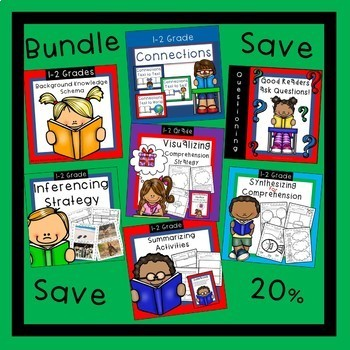My sweet student I will call "Bob" came over to the guided reading table to read with me. When I open the level A book, he began to read the pictures, pretending to make up the story as he went along.
Bob wants to read, but lacks the understanding of how print works and that there is a relationship between letters and how they connect together with sounds. When I look through my 6 pack of readers, even the A levels seems to be a bit difficult for Bob. After reviewing all the letters and sounds, it is time to start with guided readers.
The first step is to teach Bob to move his finger from left to right across the page. Bob already realizes the pictures do have a connection to the story because he is reading the pictures! Celebrate!
The next step I will move Bob through is that there is a correlation from letters to words and how these words connect with the picture. The words on each page are very predictable so that Bob will see these words repeated and have similar phrases on each page.
We start with the first word. I will break down that word one letter at a time. For example, if the word is "Cat." I will say, "Can you point to the first word?" They point to cat.
Teacher: What is that letter?
Student: C
Teacher: What does C say?
Student: /c/ making the hard c sound.
Teacher: Great! What is the next letter?
Student: A
Teacher: What does A say?
Student: /a/ making short a sound.
Teacher: What is the next letter?
Student: T
Teacher: What does T say?
Student: /t/ making the /t/ sound.
Once the sounds are established, model the three sounds. You said that C says /c/, A says /a/, and T says /t/. Then say the sounds together. /C/A/T./ Cat! Have the student repeat the sounds.
That may be all you work on that day, depending on how long that took. Otherwise read until the child comes to a word that stumps them. Break each word down.
You might make a 3x5 card of the word CAT and have the student wear it around their neck, put it on their name tag for reference throughout the day, occasionally asking them what is that word as you randomly walk past their desk.
This was an example of guided reading for one student. But the process is the same if you work with 6 students. You go around the table and work individually with each child that is at your table. Have other students work on their copy of the same book, or if they finish, they may read one of the books they brought over while they wait for you to get to them.
Finding the activities and level A books to work with students at this level can be difficult. My library consisted of only 2 level A books because publishing companies assume students coming into first grade should be reading at level C. I needed more books and so I went to my computer to create level A books and activities to do with my students.
If you need books and activities, click on the pictures that will take you to this resource. Please let me know if you have questions regarding teaching students that are reluctant to begin reading. I would love to help you with ideas.


















